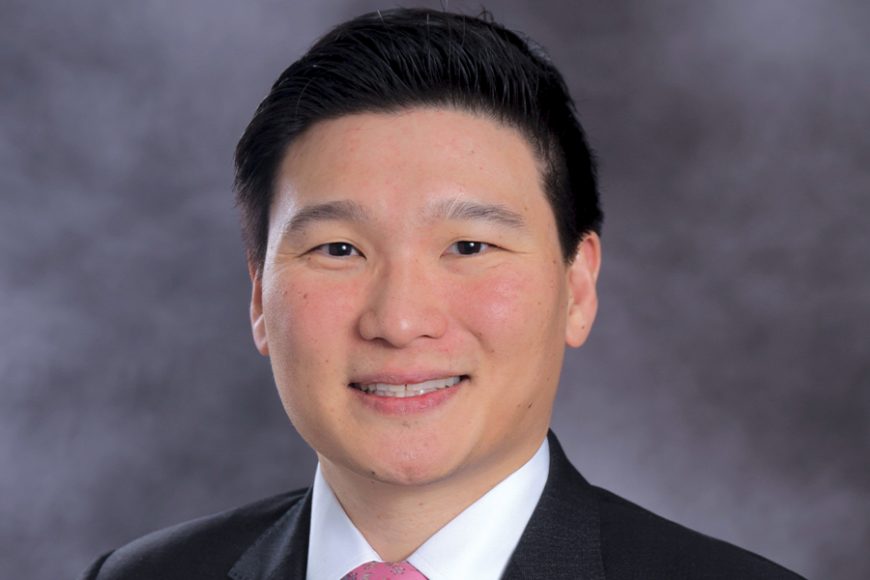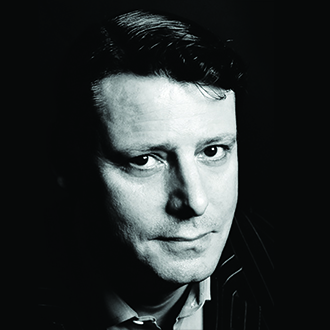There is a drawing of a cat, a rather attractively whiskered cat, on the whiteboard that takes up an entire wall in the administrative office of James Peacock, M.D. in White Plains Hospital, and it says “Meow” as it appears to launch into space. The cat, however, has nothing to do with cardiology, which is Peacock’s specialty. It was drawn by his 10-year-old daughter when she and her 7-year-old sister recently came to the hospital with their dad, and he was tasked with finding them things to do to entertain themselves. He has not had the heart — no pun intended — to erase the drawing, nor his younger daughter’s rocket ship on the far side of the whiteboard. Which is why the drawings remain there, inspired by a trip the family recently made to NASA, nestled among the medical jargon and strategic planning charts relating to Peacock’s working day at the hospital.
Specializing in electrophysiology, which is the electrical branch of cardiology, Peacock earned a bachelor’s degree in biochemical sciences at Harvard University in Cambridge, Massachusetts, and a medical degree from Vanderbilt University School of Medicine in Nashville-Tennessee, before going on to obtain an advanced master’s degree in patient oriented research from Columbia University’s Mailman School of Public Health in Manhattan. Expressed in the vernacular, the guy is no dummy and, judging by his daughters’ precision art, the apples are clearly not falling far from the tree.
One thing Peacock’s impressive, if rather dry, résumé won’t tell you however, is that here is an extremely modest man, dedicated to his work and to better health care in the community generally. So, while he valued his position as CMO at NewYork-Presbyterian, where he found himself spending about four-fifths of his time on the administrative side and only 20% practising his beloved electro-physiology, he leapt at the opportunity when he received an offer to come to White Plains Hospital nearly a year ago.
“Number one, I had wanted to be a doctor ever since I was 5 years old,” he says. “I just knew that that was my calling. I never wanted to do anything else.” His father was a scientist and with two grandparents both battling lung cancer, he found himself inspired by what he could see physicians were able to do. “I worked a long time to get here. And I was longing to see more patients, even as I was doing this administrative work.” At White Plains Hospital he has been able to do just that, and has “reset his balance,” to see more patients, while cutting down on the administrative side, although that still falls within his remit. He also had a unique opportunity to build an electrophysiology program from the ground up, since no such program existed at the hospital before.
Second, the Chappaqua resident saw coming to White Plains as an opportunity to serve his community. Working at White Plains, he says, has a different feel to working in the city. “People (in Westchester) have a sense of community. It really is neighbor treating neighbor. Just talk to the nurses and the rest of the staff that work within the hospital. Most of them live around this area and they feel like I do. They want to treat our community, and that’s a great sense of joy that comes in.”
He finds joy, too, in the medical advances of recent decades. “It’s just incredible what we are able to provide now, even compared to 20 years ago.” He tells patients that for their heart health there are a few things that they need to do but it really falls into what he describes as two buckets. “(The first is) things that you do at home — for yourself, and the second is that you have access to good quality health care.”
In the first bucket, he explains, are three lifestyle changes we can make at home — no doctor, no specialist necessary. And the first of the three changes, is diet. “I once heard a chef say — and it made a lot of sense to me, and so I tell it to my patients — that when you go to the grocery store, stay around the perimeter.” The perimeter is where the fruits, the dairy, the meats are, whereas all the stuff in the middle is the processed foods — canned, boxed and salted.
And then there is exercise, where the recommendation is for 150 minutes of moderate exercise a week. (I gulp as he says this.) Peacock recommends finding something you like doing that’s relatively active, and not to think of it as exercise, and to take time out of your day to do it. “If you enjoy hiking or jogging — there are beautiful parks all around Westchester. There are also beautiful golf courses. And, if you are able, then carry your own bag.” I ask him if walking counts and he says it absolutely does. “Anything which gets you from sitting to moving around is helpful.” And whatever level you’re at, he advises, add some intensity. “In other words, if you’re a light walker, become a fast walker. If you’re a fast walker, start to jog.” He makes it sound easy, and really it is.
The last of the lifestyle changes is emotional well-being. “I bring this back to hiking,” he says. “For example, if you’re hiking somewhere beautiful, just take 30 minutes to just be in the moment, to enjoy nature, that’s an important piece as well.”
The second bucket is access to great health care, which he says White Plains Hospital offers. But even the roles of the hospital and the doctor/patient relationship are changing as technology steps in to assist, with a whole range of products coming out in terms of what you can do to monitor your heart health unaided. “Apple Watch, Fitbit, activity trackers — if you look at the money spent on these consumer products, there is an appetite for people to want to do these things,” Peacock says.
You can now get an EKG on a consumer device, while, under the care of a cardiologist, you can have your heart monitored 24/7, without going near a doctor’s office. From a drawer, Peacock takes out a tiny object, half the size of a memory stick. Implanted in the patient’s chest, the Linq device records data from the heart continuously, immediately flagging any abnormalities requiring expeditious attention as well as sending a daily report to the physician via a monitoring center.
Progress indeed, these devices improve quality of life as well as saving lives. I’ll drink to that, I think, as I pop the stick — a parting gift from Peacock — in to my pocket, although “drink” is probably not wholly appropriate to the situation. On refection, I’ll take a 30-minute walk instead.
For more, visit wphospital.org.


